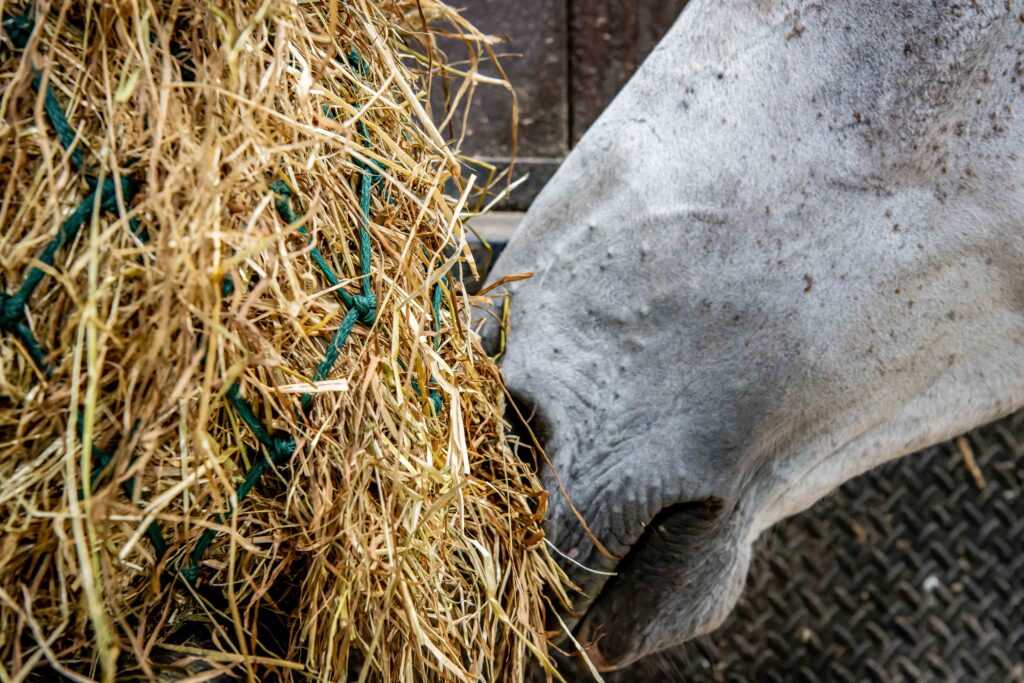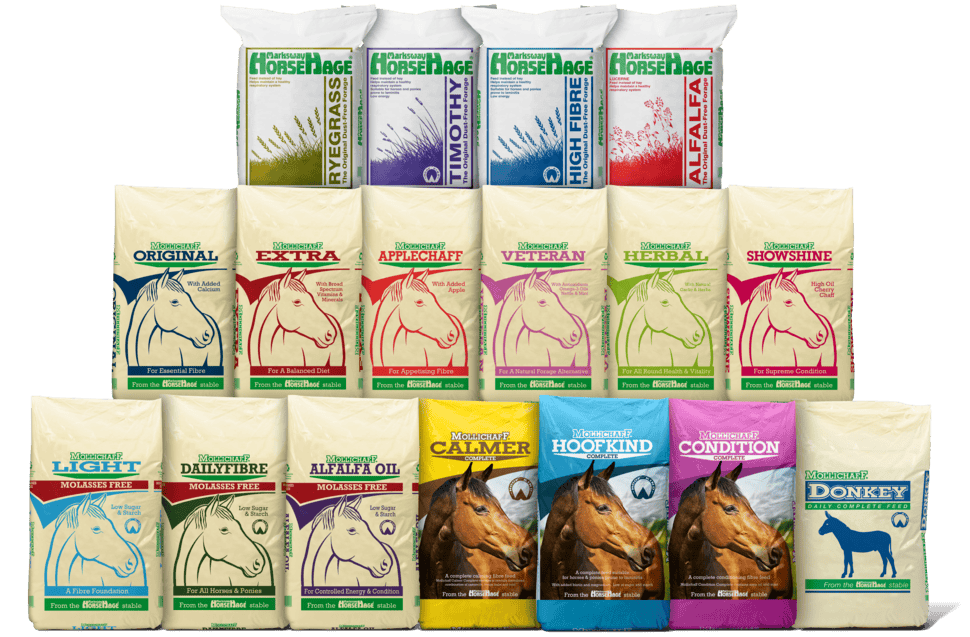
Feeding our horses to keep them in the best possible health is the priority of most owners. We all know that fibre is important, but sourcing good quality forage when grazing needs supplementing can be a challenge for many of us, especially at certain times of the year. Hay that has been badly stored, has become wet or damp, or wasn’t ever of the best quality may have deteriorated by the time it is 10-12 months old. As a result, many horse owners may unwittingly feed dusty, poor quality hay which can result in respiratory problems for their horses.
Recurrent Airway Obstruction (RAO) is considered to be the most common respiratory disease in horses today and as many as 50% of horses over the age of 8 are thought to have exhibited symptoms at some point. RAO is caused by inhalation of dust and other particulate matter from the environment, especially when a horse is stabled. Hay and straw can contain millions of fungal spores and organic material particles which can trigger an inflammatory response, resulting in an increase in mucous production and narrowing of the airways. The inhaled particles that cause these reactions in susceptible horses are sometimes known as allergens. The symptoms are recognisable by a persistent cough (often at mealtimes or whilst being exercised) and can be accompanied by a nasal discharge and apparent difficulty in breathing, especially exhalation – breathing out. RAO can often have implications on the performance of horses who are working harder.
Hay, straw and poorly managed bedding (ammonia from urine is also a respiratory allergen) are probably the biggest offenders. The degree to which forage and bedding are likely to be affected is dependent on the weather conditions when they were originally made and how they were stored. RAO is a chronic condition, and affected horses are likely to need specialist management for the rest of their lives. However, many horses can live perfectly normal, healthy lifestyles through careful management of the condition. The following steps can significantly reduce the symptoms exhibited by the horse:
- Maximum amounts of turnout! If the horse can live out 24/7, the amount of dust/mould spores he is inhaling is likely to be minimal, meaning the symptoms will be greatly improved.
- Soaking hay (if fed). Feeding soaked hay will mean the dust and mould spores are less likely to be airborne and inhaled. However, as soon as the hay dries, the spores will become a problem again. They are NOT all washed out!
- Stable ventilation. Ideally use a stable with direct access to the outside world, to ensure a constant supply of fresh air. Ensure all dusty cobwebs and dust accumulations are regularly removed from the stable. Also consider the bedding and forage of any adjoining stables if there is airflow between stables!
- Bedding. Unless of an extremely clean, good quality, straw is unlikely to be an ideal bedding choice for horses suffering from RAO. Even if using shavings that claim to be dust-free, it is worth testing a bale first as many can prove to be far from dust-free!
Some horses may also suffer from respiratory problems over the summer months, a condition known as Summer Pasture Associated Obstructive Pulmonary Disease (SPAOPD). Horses suffering from this will show symptoms very similar to hay fever in humans with coughing, nasal discharge and, on occasion, respiratory difficulties. Unfortunately, management for this is almost the total opposite to that of RAO. Horses should be removed from the pasture, particularly if it is near areas of high pollen such as rape fields or wooded areas. During daylight hours, these horses are often best kept in a dust free, well ventilated stable.
For all these individuals, finding an appropriate forage must be a main priority. As very little hay is likely to be of a clean enough quality, soaking is the only option if this forage source is going to be used. However, whilst soaking undoubtedly provides a short-term solution, if the hay dries before the horse has finished eating, the dust and mould spores will immediately become airborne again, and are likely to cause a flare up of symptoms. Another option is to consider feeding a bagged forage that is guaranteed to be 100% dust free – this is the ideal forage choice for horses suffering from RAO. Consider one that has BETA NOPS certification if you compete at a high level and are likely to be subjected to blood testing. Choose a variety which offers the energy level you require. Good doers, those prone to laminitis and those in little or no work will require a lower calorie forage. For horses that are in harder work, or those who struggle to hold their weight and need to obtain a little more from their forage ration, choose one with higher calorie levels.
Top Tips for Feeding Horses with RAO:
- Turnout as much as possible (if the horse also suffers from SPAOPD, choose summer grazing areas carefully and consider removing the horse from pasture when key pollen types and levels are particularly high)
- Use a 100% dust free forage
- Ensure stables are kept clean and well ventilated
- Use a bedding with minimal dust content
As mentioned above a dust free forage is crucial for supporting the health and performance of the horse. Choose one of our HorseHage range, depending on condition, workload and energy requirements.
Want free nutritional advice?
Our friendly and knowledgeable team is available on weekdays from 9am to 5pm.
Give us a call at 01803 527274 or send an email to sales@horsehage.co.uk


